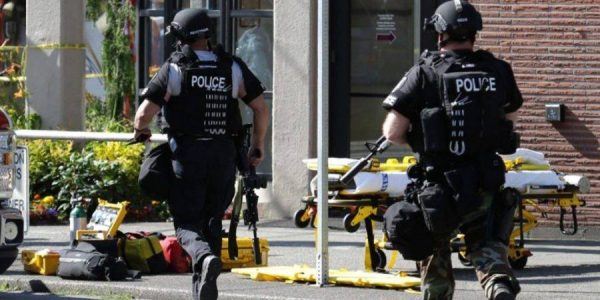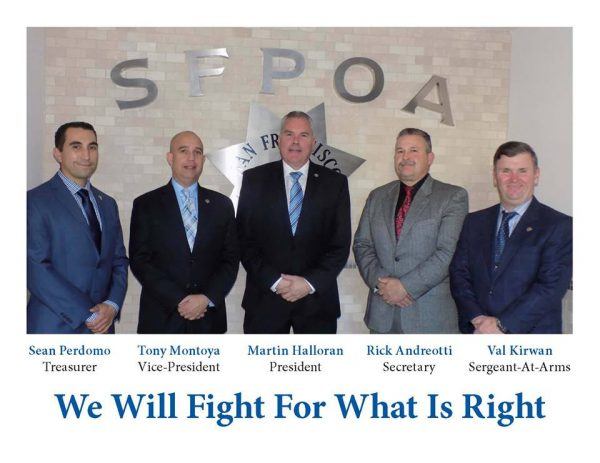Not only is San Francisco a rogue city with regard to its failure to cooperate with ICE agents who are doing a job that is necessary to protect America’s people and its borders, but the city also seems openly hostile toward its police officers. How else can you explain the firing of a rookie police officer, on only his fourth day, still with a training officer, for doing his job? What does this say to other officers? Can you say de-policing?
My colleague, T.B. Lefever, recently wrote a column documenting this de-policing effect on officers, referencing the punishing of two Miramar Police Department SWAT officers who’d entered the Parkland, Florida high school to assist with finding and stopping the shooter. For their efforts, these highly-trained officers were suspended. Why? Because they didn’t let their dispatcher know they were going into the school.
A violation of department protocol, sure. But, under these extreme circumstances, to be removed from your unit for trying to help save kids is absurd. Lefever writes that Miramar P.D.’s response to those SWAT officers’ actions, “is a surefire way to create a bare-minimum culture where officers handle their 911 calls like the customer service rep that answers the phone when you call Comcast. It’s passionless service with no human connection.” He’s exactly right.

I hesitate to draw too solid a conclusion about most incidents I evaluate because I wasn’t there. It’s not fair, especially when I am critical of officers’ actions. There are too many unknowns, too many variables. However, every once in a while, there is conclusive (to trained police officers) video and other evidence that truly tells the story. Especially in this case where the video shows how officers must make life or death decisions in a split-second.
According to Policeone.com and the San Francisco Gate, rookie officer Chris Samayoa was riding in the passenger seat of a patrol car driven by his training officer. On December 1, they responded to a report of a suspect, Keita O’Neil, 42, who had allegedly carjacked a state lottery employee, stealing her mini-van. He later led police on a vehicle pursuit, greatly endangering the public. The lottery worker reportedly suffered minor injuries after O’Neil had allegedly knocked her to the ground before taking her vehicle.
Eventually, O’Neil stopped the van in the street. As Samayoa’s patrol vehicle neared the stolen mini-van, O’Neil reportedly got out of the vehicle and charged toward the patrol car. As he arrived at the passenger side door, Officer Samayoa fired his weapon through the passenger door window, striking O’Neil, who fell to the pavement. O’Neil was later pronounced dead at the hospital.
In all of this, what, exactly, did the officer do wrong?
Monday morning quarterbacks might ask if perhaps the “unarmed” O’Neil wasn’t planning to attack the officers but was only fleeing past the police car to escape. Maybe, but you have to admit, it’s unusual for a suspect who is trying to escape from police to run toward them. Also, no one except for O’Neil knew he was unarmed until after he was searched. Would you really ask Officer Samayoa to make two bets with his and his partner’s lives: one, that O’Neil was unarmed and two, that he planned on running past the patrol car? I’m not aware that SFPD is now issuing officers x-ray glasses with their body-worn cameras.
I’m not the only one irked by SFPD’s decision to terminate this officer. Marty Halloran, the San Francisco Police Officers Association president who knows more details of the incident than I do, said, “Chris was fired for doing what he was trained to do by the SFPD Academy, and for what happened on his fourth day on the job under extremely stressful and difficult circumstances.” In an additional statement, Halloran wrote, “This was a needless action as any taken by someone wearing the uniform of our chief.”

(Credit: Facebook/Martin Halloran)
It seems the SFPD police chief, Bill Scott, is what I call a chief of mayor, not a chief of police. This was obviously a political decision. The chief did not have that new officer’s back like he should have. What was that officer supposed to do when he saw a felony carjacking suspect come running toward him? Assume O’Neil was surrendering? Assume he wasn’t armed and about to pull out a weapon? Assume he was only going to run past the car? Try to have a discussion with him as to his true intentions? Wait…I know. Maybe the officer should have attempted to “de-escalate” the incident by offering the felon a coupon for a double-tall latte at Starbucks.
No, Officer Samayoa did exactly what I hoped my students would have done back when I was a field training officer(FTO) if they perceived they were being attacked. In fact, when I was an FTO, we graded student-officers from 1-7, poor to excellent. If my student had allowed a carjacking suspect to run up on our car without considering that a lethal-force situation, I’d have given him a 0 and recommended remedial training or termination.
Think about it. If that suspect had been armed with a firearm, and Officer Samayoa hadn’t drawn his weapon and fired, both he and his training officer could have been wounded or killed. From the video, the training officer had no shot from the driver’s seat without a great risk of shooting his partner. Both Samayoa and his training officer were depending on the rookie’s proper and quick decision to stop the threat.
Policing is not a perfect science, and it never will be. It seems as if we’re getting to the point in society where if something goes wrong during a criminal or mental illness-related violent incident, it’s always the cops’ fault. Again, what were the reasonable alternatives for an officer who sees a felony carjacking suspect running toward him after a police chase? O’Neil had already injured one person and put many others at risk by driving recklessly and attempting to elude police.
The SFPD declined to comment on Officer Samayoa’s firing, saying it is a personnel matter.
In doing research for this story, I read a lot of comments about what the officer shouldn’t have done, which aren’t worth repeating. But I read no lucid comments about what the officer should have done instead. How about we go with what the police union president Halloran told the San Francisco Gate, that Samayoa is a “textbook example of what a police officer should be.” Sorry, Marty. It seems San Francisco’s political leaders are not in the least interested in what a police officer should be.
















